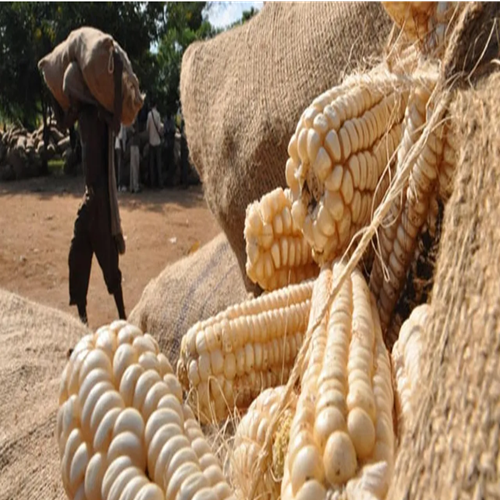‘Tanzania could beat Uganda to big grain deal with Zambia’

East African Grain Council (EAGC) discusses Uganda’s role in supplying maize to Zambia amidst drought, emphasizing competitive pricing and quality standards. EAGC aims to streamline logistics and cross-border trade through partnerships to ensure market competitiveness. Harmonization of regional standards addresses previous issues, ensuring quality control. EAGC supports government initiatives like the National Social Security Fund’s grain aggregation project to enhance market liquidity and benefit farmers. Agricultural sector budget proposals seek tax incentives to boost production and competitiveness across East Africa.
Grain, an unsung hero of our daily sustenance, is thrust into the limelight only when markets falter and prices skyrocket. It’s in these moments of economic turbulence that grain reveals its true significance, capturing headlines and reminding us of its vital role in the world’s food chain.
In one way or another, growing and selling grains is how at least 30 percent of Ugandans make a living. They consequently bear the brunt when this priceless agricultural produce is mishandled in the market.
Uganda, just like Tanzania, is a food hub. Zambia is currently grappling with a drought, which gives Ugandan farmers a chance to enter the grain market by offering to supply several tonnes of maize. But how likely is it that your maize will reach Zambia at a price that is competitive? Besides, how can one profit from this precious product on the market? These questions swirled in my mind as I prepared to meet Mr Gerald Makau Masila, the executive director of the East African Grain Council (EAGC).
With its reserves running low and more than two million people at risk of starvation, Zambia is in negotiations with Uganda to potentially receive more than 500,000 metric tonnes of maize. However, according to David Kyomukasa, the permanent secretary in the Agriculture ministry, certain requirements must be met for successful export. These include ensuring quality and available volumes, as detailed in a letter dated March 25, 2024, as reported.
Work to be doneMr Masila, whose business operates within the grain value chain, states that for traders in Uganda or Tanzania to successfully tap into the market, competitive pricing is crucial.
“Remember, it’s not only Uganda and others that have a surplus and are supplying to the market. So the whole thing of price determination is determined in the market,” he tells me while we meet at the Serena Hotel Kampala.
His charm, however, gives confidence that the looming hurdles will be wiped away. He says that currently his institution is advising all grain producers to be as efficient as possible and offer the highest quality product. The most attractive offer is the one that will succeed in the market, he emphasises.
“We have looked at the value chain and we are seeing that the things that are building up the price that will be offered for instance to Zambia, are logistics and making sure that it is standardised in quality which requires a cost in the warehouses,” he starts.
“Now, to move that grain all the way to Lusaka, Zambia for example, you will cross borders and you will be doing clearing and everything on these posts. So, if the cost buildup becomes so high, the price when you land in Harare becomes a price that will be much higher if you were brought from somewhere far,” he continues.
Such inefficiencies could make Uganda’s produce less competitive. To address these issues, the EAGC is seeking partnerships, such as with TradeMark, an Aid-for-Trade organisation, to improve supply chain logistics and streamline cross-border clearing. This involves reducing delays and costs at borders, optimising haulage quantities, and ensuring that scaling costs per tonne remain low, so your produce stays competitive.
“We know that Uganda is making an offer in the market, but Tanzania is also making an offer. They are even closer to Zambia,” he notes, adding, “We are working with more farmers and partners to bring down the cost as possible to ensure that logistics and cross border clearance does not get to a level where it increases the costs and becomes uncompetitive.”
He then proceeds to conclude that “there is a lot to be done.” The other day, he recalls, “we checked and because of the cross border posts, a truck took 10 days to cross.”
Standards questionSo I ask him about certification of the produce that reaches Zambia because there has been a precedent. The South Sudan National Bureau of Standards (SSNBS) seized 65 Ugandan trucks carrying maize to South Sudan in June 2023 at the Nimule-Elegu border post due to claims that some of the maize’s quality had been compromised. According to the South Sudanese authorities, the maize was unfit for human consumption because it had aflatoxins of more than 10 bpp and a high concentration of b-propeller phytases (bpp).
Later, presidents Yoweri Museveni (Uganda) and Salva Kiir (South Sudan) decided that the impounded trucks be brought back to the border post so that the East African Community mobile laboratory continues testing them.
I want to know from Mr Masila if this issue might recur, and he is quick to assure me that significant efforts have been made to harmonise standards across the East African region, and have fruited a unified standard for maize, beans, and other grains.
“So with standards, it won’t bring a cost or trade barriers that will make cross-border trade difficult. Obviously, standards were an issue earlier when they were different in different countries, but now we have been able to harmonise. The challenge we have is to be able to test and get a quick test analysis so that it doesn’t take much more time. That is an issue that we are trying to address,” he says.
“We have had our members who are invested in lab services and testing services, and even at the EAGC, we are providing that service from our secretariat. When our members in Uganda are exporting, they normally call our quality inspectors, who come, sample and analyse with mobile test kits, and make sure that it meets the regional standards,” he adds.
One of the initiatives the East African Business Council (EABC) has been developing with TradeMark is the creation of one-stop border posts to reduce the time trucks spend at borders. A new post has recently been established at the Zambian-Tanzanian border to facilitate faster and smoother trade between our countries
EAC Finance billsSo now the conversation shifts to the current national budgets across the region where finance bills have been presented with the respective governments proposing taxes and incentives to bolster their macroeconomic strategies for the next fiscal year. Mr Masila mentions that the EAGC has previously collaborated with the EABC to analyse all budget bills submitted by regional partners before their readings. They assessed how these bills could impact the grain sector, especially concerning the movement of grain across borders, production, and other aspects of the value chain.
“And we have already submitted our submissions in each of the countries. As they are right now, they are not specifically impacting only the grain sector but business generally, whether you are in the grain industry or not. And that’s why we have specifically asked for incentives. We are saying that agriculture is very important, and you need to look at initiatives that will increase production, increase competitiveness, reduce production costs, and make it easier to move trade across borders,” he notes.
“Some of the proposals we have given aim to improve food safety. We have said that right now, to build the lab chemicals and lab equipment and all those other infrastructures for quality, they are all subject to taxes yet these are used to improve food. We are making an appeal that any investment that is going to improve the quality of our food should not be taxed but instead be given as an incentive to attract private sector investment,” he adds.
National marketing companyAs we finish our lunch, I inquire about the National Social Security Fund’s plan to establish a Shs40 billion company aimed at aggregating grain, ensuring timely payments to farmers at competitive prices, a project currently in the pipeline. He seems happy about it and grins before he responds.
“Our view is that the government company is coming at a higher level as a super aggregator. And we see that a lot of time issues don’t come from mere ideas. Many of the problems we suffer are implementation problems. We see that, to an extent, it could even be beneficial if you have that marketing company with liquidity and finance. So if they come with liquidity and finance, that means they will be able to buy grain, and money will trickle down to farmers,” he says.
He further observes that some seed companies have shown up to collect seeds from businesses, but they have not paid them.
“That’s how we see it: if a big contract, like in a country, has been agreed upon and the prices are attractive, then the rest of us who are small aggregators will supply the super aggregator who can get a benefit out of it. We see that it’s not something that will cause a conflict but something that can bring liquidity and grow the sector as well,” he concludes.
















